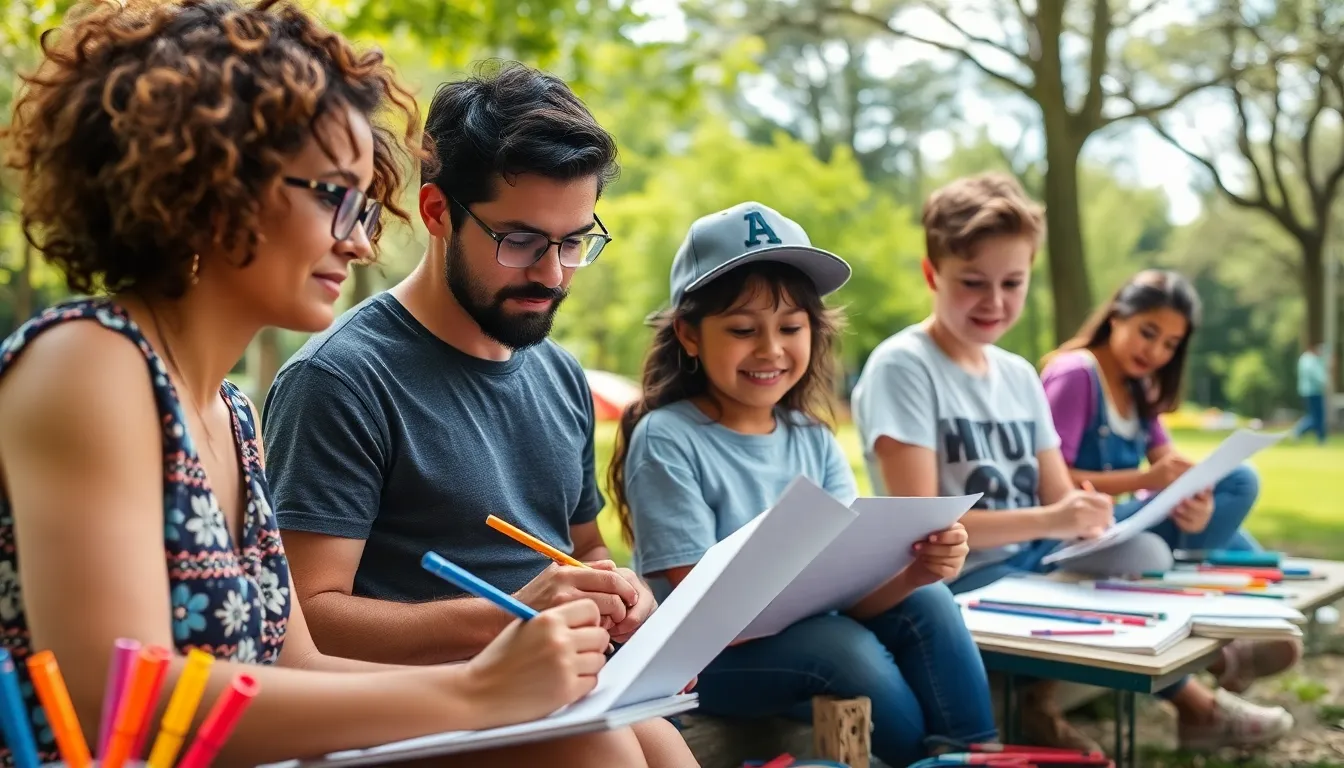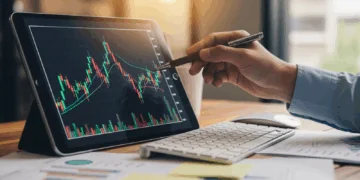In a world turned upside down by a tiny virus, creativity found a way to thrive. Enter the COVID-19 drawing challenge, where artists of all skill levels picked up their pencils and paintbrushes to transform pandemic experiences into vibrant works of art. Who knew that sketching your quarantine cat could spark a global movement?
COVID 19 Drawing Challenge
The COVID-19 Drawing Challenge emerged as a creative response to the pandemic, inviting artists to share their experiences visually. Participants from diverse backgrounds engaged, posting their artwork on social media platforms. During lockdowns, many found solace in art, illustrating themes of isolation, hope, and resilience.
This challenge created a sense of community among artists and non-artists alike, bridging gaps through shared creativity. Individuals showcased various forms of art such as sketches, paintings, and digital illustrations, reflecting personal narratives. Each piece contributed to a collective expression of the pandemic’s impact on society.
Art supplies became a popular topic, with many artists utilizing what they had at home. Social media challenges flourished, encouraging themes like “draw your pet” or “represent your favorite memory,” making art accessible to everyone. Daily drawing prompts stimulated creativity and kept spirits high during uncertain times.
The challenge attracted global attention, with hashtags generating thousands of posts. Artists saw increased engagement, creating connections across cultures and experiences. New artists emerged, using this platform to develop their skills and share their unique perspectives.
Through the COVID-19 Drawing Challenge, creativity flourished globally despite physical distancing. Participants harnessed their artistic abilities to document their stories and find comfort in shared experiences. This movement highlighted the power of art to unite, heal, and inspire during challenging times.
Benefits of Participating

Participating in the COVID-19 Drawing Challenge provides numerous benefits for individuals and communities.
Mental Health Benefits
Engaging in art helps alleviate anxiety and stress. Many participants found that creating drawings served as a form of therapy, allowing them to process emotions. Art offers a distraction from daily challenges, promoting a sense of calm. Sharing work with others fosters connection and reduces feelings of isolation. Studies indicate that creative activities can lead to improvements in mental well-being, including reduced symptoms of depression. Social media platforms amplify these effects by enabling artists to receive positive feedback. This interaction enhances motivation and reinforces a sense of purpose.
Creative Expression
The challenge encourages individuals to explore their artistic abilities. Expressing feelings through drawings offers a unique narrative of personal experiences. Various art forms, such as painting and digital illustrations, emerge from the challenge, showcasing diversity. Participants often experiment with styles and techniques, enhancing artistic skills. Sharing these creations cultivates a sense of community among artists. Additionally, many discover new passions they did not previously pursue. Ultimately, participants enjoy the freedom to express their emotions without judgment, contributing to their overall creative journey.
How to Join the Challenge
Joining the COVID-19 Drawing Challenge is straightforward and open to everyone, regardless of artistic skill level. Participants can share their artwork and connect with a global community through various platforms.
Platforms to Use
Instagram and Facebook are popular choices for posting artwork, fostering interaction and visibility. TikTok enables creative video presentations of the drawing process, enhancing engagement. Twitter’s hashtag feature allows for easy discovery of challenge-related posts. Pinterest offers a visual gallery for documenting artwork. Using these platforms maximizes reach, encouraging connections with other artists and art lovers.
Tips for New Participants
Starting the challenge can feel daunting, but several tips can make the experience enjoyable. Setting aside specific time for drawing promotes consistency and motivation. Exploring different mediums opens up creative possibilities, as does stepping outside comfort zones. Observing other artists’ work can provide inspiration and techniques to try. Lastly, using relevant hashtags increases visibility and helps find a supportive community. Participating in discussions can build connections, creating a sense of belonging within the artistic world.
Notable Artists and Their Contributions
The COVID-19 Drawing Challenge showcased remarkable talent from artists around the world. Many used their skills to convey powerful messages through their artwork.
Featured Drawings
Noteworthy creations included sketches illustrating daily life during the pandemic. Artists captured emotions ranging from isolation to hope. Simple yet profound works resonated widely, exemplifying the human experience amidst adversity. One popular piece depicted a family sharing a virtual meal, symbolizing connection despite physical distance. Other drawings highlighted everyday moments, like pets keeping their owners company. These artworks not only reflected individual stories but also created a collective narrative of resilience and unity.
Artist Interviews
Interviews with participating artists revealed their motivations for joining the challenge. Many expressed a desire to share their stories and connect with others in similar situations. One artist emphasized the therapeutic nature of drawing, stating it provided solace during uncertain times. Another noted the sense of community fostered through shared creativity. Artists mentioned that engaging with and encouraging one another on social platforms enhanced their creative journeys. This exchange of ideas and support played a vital role in sustaining artistic passion and mental well-being during difficult months.
Community Impact
The COVID-19 Drawing Challenge significantly impacted communities worldwide. Artists engaged with this initiative, sharing their work and experiences through a common lens. Many individuals used art as a therapeutic outlet, allowing them to address anxiety and uncertainty.
Diverse themes emerged in the artwork, reflecting both personal and collective stories. Creators illustrated moments of isolation, hope, and resilience in their sketches, paintings, and digital illustrations. Community members connected over shared experiences, fostering a supportive environment both online and offline.
Social media platforms played a crucial role in this movement. The challenge generated thousands of posts under specific hashtags, enhancing visibility for participants and broadening audience reach. By connecting with artists across the globe, individuals exchanged ideas and inspiration, leading to a richer artistic dialogue.
Participants also discovered new passions through this challenge. Many tried various techniques and mediums, expanding their creative horizons. As they interacted with each other, they forged lasting connections that extended beyond the challenge, creating friendships and networks.
Evidence of the artwork’s influence surfaced through various channels, including notable interviews with participating artists. They shared how the challenge motivated them to explore their creativity, emphasizing the importance of community support. This collective experience nurtured a sense of belonging, essential during a time of widespread uncertainty.
Engagement in the challenge also promoted mental well-being. Through the sharing of their art, participants reported feeling less isolated and more connected to others. The collaborative spirit fostered by the challenge demonstrated art’s power to unite individuals, inspiring both personal growth and collective healing during challenging times.
Conclusion
The COVID-19 Drawing Challenge emerged as a beacon of creativity and connection during a time of uncertainty. It not only provided an outlet for artistic expression but also fostered a sense of community among participants worldwide. Through shared experiences and diverse artwork, individuals found solace and support, transforming personal narratives into collective healing.
As the challenge continues to inspire artists of all skill levels, it highlights the importance of creativity in overcoming adversity. Engaging in art has proven to be a powerful tool for mental well-being, encouraging exploration and connection. The impact of this challenge will resonate long after the pandemic, reminding everyone of art’s ability to unite and uplift in challenging times.















